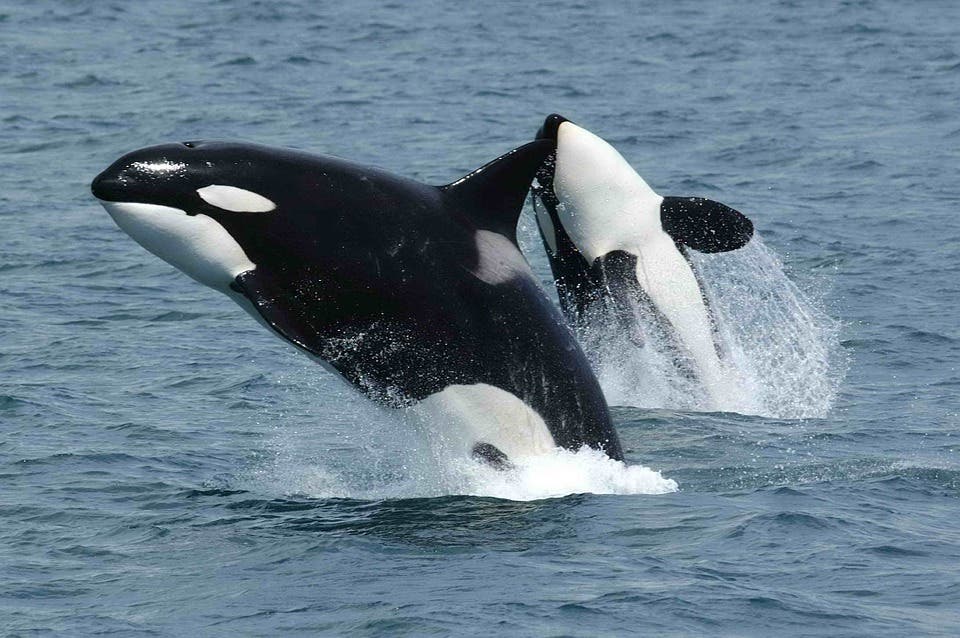Although highly toxic polychlorinated biphenyls — known as PCBs — have been globally banned in 2001, the long-lived chemical is still taking a huge toll on marine wildlife. According to a recent study, half of the world’s orca populations could collapse in the next 30 to 50 years due to PCB contamination.

The killer of killer whales
Orcas (Orcinus orca), also known as killer whales, have the second largest brain of all marine mammals. They have their own local dialects, coordinate each other in sophisticated hunting teams, teach one another specialized methods of hunting, and pass on behaviors that can persist for generations.
Remarkably, orcas — which are actually a species of dolphins found in all oceans, from the frigid Arctic and Antarctic regions to tropical seas — can also imitate sounds from bottlenose dolphins, sea lions, even humans. Take Wikie, for instance, a killer whale which is able to produce human sounds such as ” “hello”, “Amy”, “ah ha”, “one, two” and “bye bye” (audio player below).
But these sensitive and highly intelligent creatures are in great distress. PCBs, organic compounds once used in capacitors, oil paints, and other industrial applications, are altering the orcas’ behavior, affecting their reproduction, and damaging their immune system — so much so that scientists fear many pods around the world will collapse because of it.
The manufacturing of PCBs was banned in the United States and other countries during the 1970s and 1980s after studies showed how dangerous they can be. In 2001, a worldwide PCBs ban was adopted at Stockholm. However, the chemicals still persist in the water and the food chain, jumping from the zooplankton to fish and seals, which are the orca’s favorite meals. With each jump up the food chain, the concentration of the toxic compound increases. Being at the top of the food chain, orcas have built up high concentrations of the carcinogens in their blubber.
According to a recent paper published in the journal Science, some orcas carry as much as 25 times the amount of PCBs known to alter fertility. Killer whales are particularly threatened in heavily contaminated areas like the waters near Brazil, the Strait of Gibraltar and around the UK. In waters around the British Isles, researchers estimate, only 10 killer whales remain.
“This suggests that the efforts have not been effective enough to avoid the accumulation of PCBs in high trophic level species that live as long as the killer whale does. There is therefore an urgent need for further initiatives than those under the Stockholm Convention,” Dr. Paul Jepson from the Zoological Society of London’s Institute of Zoology said in a statement.
Not only are PCBs slow to decay in the environment, but they’re also passed down directly from mother orca to offspring through fat-rich milk. This means that the toxic chemicals remain in the animals’ body instead of being released into the environment. An orca can live as long as a human, which means that many individuals were still alive during PCB’s heyday, before the worldwide ban. Populations that look healthy today may still be at great risk, the researchers say.
“We know that PCBs deform the reproductive organs of animals such as polar bears. It was therefore only natural to examine the impact of PCBs on the scarce populations of killer whales around the world,” said Professor Rune Dietz from the Department of Bioscience and Arctic Research Centre, Aarhus University, who initiated the killer whale studies and is co-author of the article.
The researchers reviewed data from existing literature, along with their own records, which included information on PCB level in more than 350 individuals — that’s the largest number of killer whales ever studied. The data was fed into a model that predicted the effects of PCB on the mortality and number of offspring of killer whales over a period spanning a century. The results suggest that 10 of the 19 populations the authors studied were already in decline.
“The findings are surprising. We see that over half of the studied killer whales populations around the globe are severely affected by PCBs” postdoc Jean-Pierre Desforges from Aarhus University, who led the investigations, said in a statement.
Banning PCBs clearly made things better for orcas, but the study’s findings suggest we need to do more in order to improve their outlook. PCBs are still present in legacy products, such as transformers or cable insulation, and these need to be carefully tracked and safely disposed of. Meanwhile, other threats to orcas such as noise pollution, climate change, and food scarcity need to be addressed in order to help populations recover.


